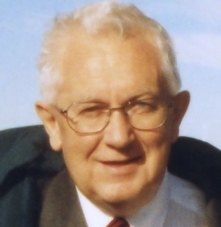Antal Csakány
After a short period at the United Light, he worked as a senior research fellow at the Central Physical Research Institute (KFKI) for 35 years from 1957.
At KFKI, he initially worked on the development of nuclear electronic instruments, and later on issues of digital data transmission between computers. In the heyday of KFKI, he played a decisive role in the development of electronic instruments and computers and in mapping their applications. He studied problems arising in the field of measurement theory and signal processing with great interest and with significant results. His insights and methods proved to be of fundamental importance for natural science research during the production of instruments developed and manufactured at the Institute. He developed many smart small instruments with a team of a few technicians and engineers (MTX tube particle counters, rate meters). He developed the so-called non-overloading linear amplifier for the so-called multi-channel analyzers, which were the pride of KFKI at that time.
Starting in the 1970s, he also became involved in theoretical and practical research in the field of data processing of interstellar radio signals (messages).
From the early 1980s, while investigating the application possibilities of minicomputers, his attention was drawn to their use in education.
He was involved in university education from the beginning of his career. He was a part-time assistant professor at the Department of Atomic Physics at ELTE from 1959, an assistant professor from 1965, and a full-time assistant professor from January 1992. His main subject taught to physicists was Electronics. Until his retirement in 1997, he headed the university's Information Technology Laboratory; after that, he taught on a contract basis until 2007.
His 48 years of teaching activity have been recognized with numerous awards and honors. In addition to his many articles, his work is characterized by numerous university notes and textbooks, most of which are still in demand today. His best-known book is Mikroszámítógépek, written together with Ferenc Vajda, which has been published in several editions (Technical Publishing House, Budapest, 1976). He also wrote Játékok számítógépek with Vajda (Technical Publishing House, Budapest, 1980).
- obituary (Physical Review, 2010. 10. issue, pp. 360-361.)
- Antal Csákány's works on the Internet (2020)
- Antal Csákány – István Kiss: Technical literacy – technical education (Magyar Tudomány, 1975. No. 3, pp. 166-169)
- Antal Csákány - György Marx: MIKRO (the challenge of informatics) (Physical Review, 1983. No. 3, pp. 161-165)
- János Antal - Antal Csákány: Physics and Computer Science (Physics Review, 1987. 7. issue, p. 271)
- As an interesting fact, we would like to mention the report generator he developed as a joke: a computer program that wrote a report from the professional and colloquial vocabulary entered according to the specified parameters (report length, topic, positive or negative tone, etc.).
- He himself introduced his three grandchildren to the mysteries of computer technology and information technology.
- Cooking was his creative hobby.
Created: 2020.04.20. 21:20
Last modified: 2024.06.21. 20:29

